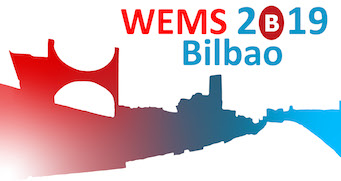Speaker
Description
Chemical experiments with Mn-57 at ISOLDE CERN
Dedushenko S., Gunnlaugsson H., Larsen E., Olafsson S., Johnston K., Masenda H., Peters G., Schell J., Unzueta Solozabal I., Yablokov M., Zyabkin D., Bendix J., Bharuth-Ram K., Gisslasson H., Hemmingsen L., Krastev P., Langouche G., Mantovan R., Naidoo D., Perfiliev Yu., Qi B., ISOLDE Collaboration
ISOLDE, CERN
EMS is an important method for chemistry, allowing us to study cobalt and manganese compounds. For example, the decay of manganese presenting as permanganate-ion (MnO4-) could lead to unknown Fe +7 state.
First wet chemical experiments with short-lived Mn-57 (T1/2=85s) were conducted at ISOLDE CERN in June 2017. Mn+-particles were implanted into approx. 100 nm layer of manganese metal supported on copper foil. Then the layer was dissolved in sulfuric acid giving Mn2+-solution. The EMS pattern of the frozen solution undoubtedly corresponds to high-spin divalent iron and correlates with the known data for FeSO4 and CoSO4 frozen solutions. Oxidation of Mn2+ by NaBiO3 doesn’t lead to any noticeable changes in the spectrum, despite the color change (from colorless to violet) which is clearly observed. Further chemical treatment of this solution by concentrated NaOH and, further, by sulfite leads to the observation of trivalent iron in the spectra, despite the respective color changes (from violet to green and, further, to brown with a sediment) observed. Isotopic exchange reactions were also performed.
The results obtained are analyzed in terms of the number of chemical forms of iron, the respective recoilless fractions, and the possibility of post-effects of the decay.




